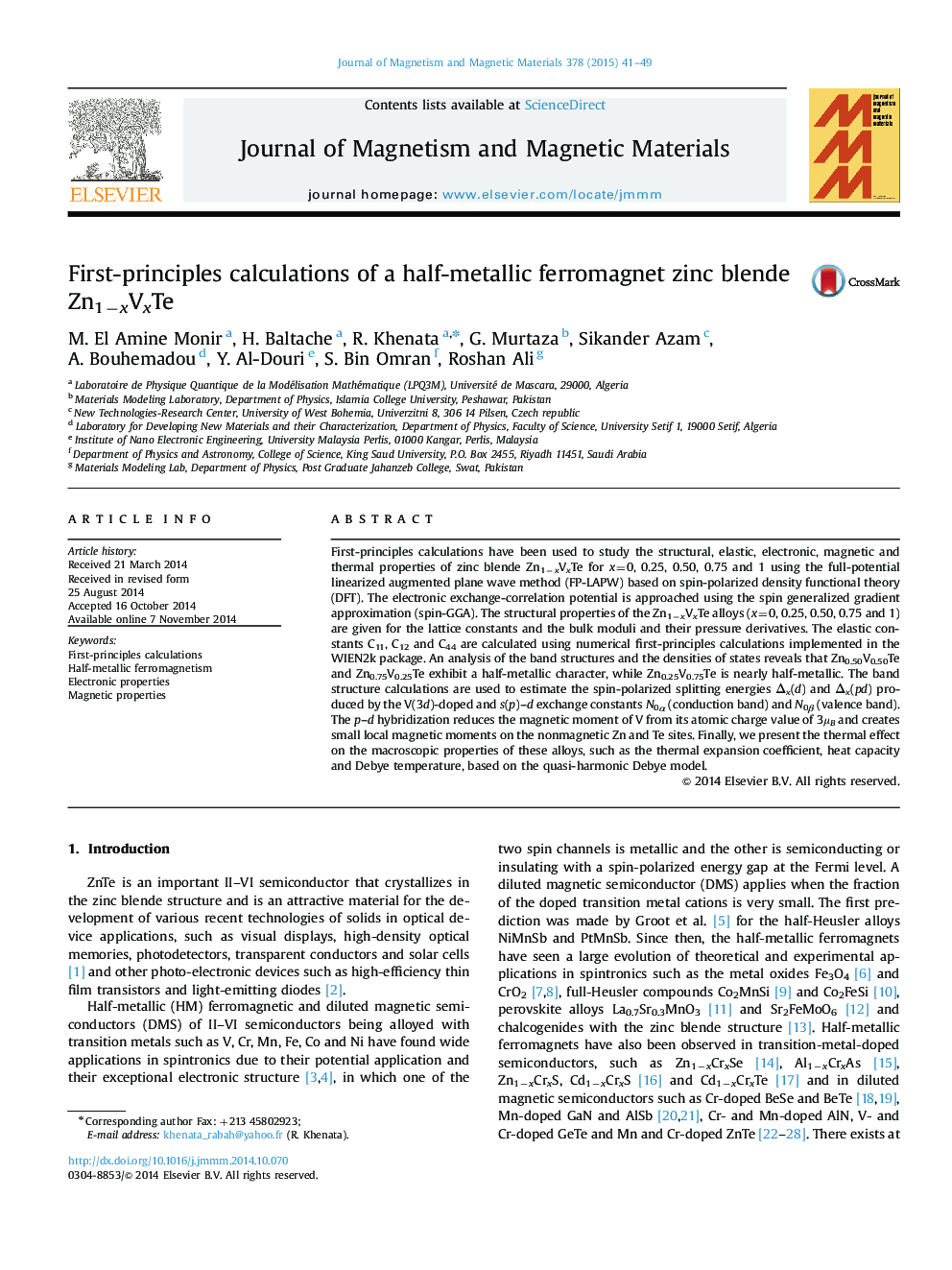| Article ID | Journal | Published Year | Pages | File Type |
|---|---|---|---|---|
| 1799283 | Journal of Magnetism and Magnetic Materials | 2015 | 9 Pages |
•Some physical properties of Vanadium doped ZnTe have been investigated.•Structural parameters for the parent compounds compare well with the available data.•The elastic and thermal properties are studied for the first time.
First-principles calculations have been used to study the structural, elastic, electronic, magnetic and thermal properties of zinc blende Zn1−xVxTe for x=0, 0.25, 0.50, 0.75 and 1 using the full-potential linearized augmented plane wave method (FP-LAPW) based on spin-polarized density functional theory (DFT). The electronic exchange-correlation potential is approached using the spin generalized gradient approximation (spin-GGA). The structural properties of the Zn1−xVxTe alloys (x=0, 0.25, 0.50, 0.75 and 1) are given for the lattice constants and the bulk moduli and their pressure derivatives. The elastic constants C11, C12 and C44 are calculated using numerical first-principles calculations implemented in the WIEN2k package. An analysis of the band structures and the densities of states reveals that Zn0.50V0.50Te and Zn0.75V0.25Te exhibit a half-metallic character, while Zn0.25V0.75Te is nearly half-metallic. The band structure calculations are used to estimate the spin-polarized splitting energies Δx(d) and Δx(pd) produced by the V(3d)-doped and s(p)–d exchange constants N0α (conduction band) and N0β (valence band). The p–d hybridization reduces the magnetic moment of V from its atomic charge value of 3µB and creates small local magnetic moments on the nonmagnetic Zn and Te sites. Finally, we present the thermal effect on the macroscopic properties of these alloys, such as the thermal expansion coefficient, heat capacity and Debye temperature, based on the quasi-harmonic Debye model.
